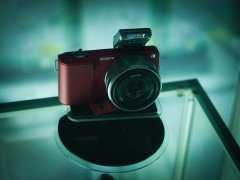
The excitement for the mirror-less cameras is gaining momentum. Making a mark with Panasonic’s DMC-G1in 2008, the trend of offering fast, light and small no-mirror design has surpassed all the major camera manufacturers. These mirrorless designs are categorized as the cameras with relatively larger sensor which shower the benefits of better image quality (even in low light) and high speed capture. While currently there are multiple mirrorless cameras in market, here are top 5 options to help you pick the best one from the basket.
-
Nikon 1 V1 / J1
Nikon 1 system introduces two new members in the family of mirror-less cameras largely dominated by Olympus PEN series, Sony NEX series, Samsung NX series, etc. With its V1 and J1 models, Nikon has finally entered the market segment targeting the amateur photographers, categorized as Facebook shooters by dpreview. Nikon 1 system is in limelight for introducing the all new CX format (featuring 2.7x crop) with V1 and J1. Both the cameras essentially share same set of features — 10.1 MP CMOS sensor powered by EXPEED 3 image processor, hybrid auto-focus, motion snapshot, smart photo selector and 1 Nikkor interchangeable lenses (specifically designed to work with Nikon 1 system). The cameras however vary on the grounds of design, sophistication (for instance V1 offers electronic as well as mechanical shutter control) and cost. Likely to be available by mid-October, you can grab Nikon 1 J1 for $649.95 approx. and Nikon 1 V1 for $899.95 approx. Get it here.
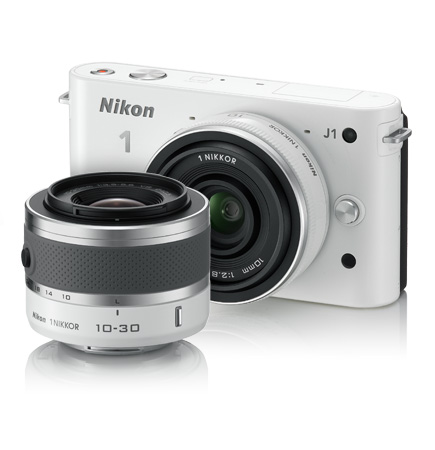
Nikon1 J1
-
Samsung NX200
Already in the market for quite some time for the mirrorless implementation, Samsung is now all set to step ahead for offering professional quality in a compact camera. Samsung NX200 amalgamates high performance features in stylized metallic looks. Talking of the specs, the camera features 20.3 MP APS-C CMOS sensor, high speed capture (including 100ms Advanced Auto Focus), wide range ISO (100-12800), Full HD movie recording and Samsung’s unique i-Function lens. The upgraded i-Function 2.0 allows you to control 6 smart filters and intelli-zoom function from the lens itself. The packaged deal of small size of the compacts and high performance features of DSLR costs you around $899.99 approx. Get it here.
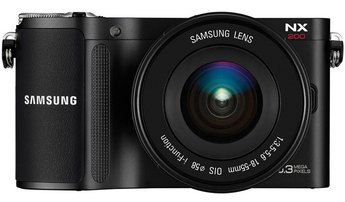
Samsung NX200
-
Sony Alpha NEX 7
After the successful launch of mirrorless cameras around a year back, Sony is now redefining the compacts with the launch of NEX 7. Designed with an attempt to come over the limitations of the NEX series, NEX 7 is targeted at the photography enthusiasts and professionals alike. According to dpreview, this high end APS-C mirrorless camera manages to squeeze vast amounts of the A77’s capabilities into a body barely bigger than the existing NEX models. It packs a 24MP APS-C CMOS sensor and XGA OLED TruFinder 2.4M dot OLED electronic viewfinder into its magnesium alloy body and yet still finds room for a pop-up flash and Alpha hot shoe. Other exciting features include responsive autofocus and world’s fastest (20 ms) release time lag, versatile new TRINAVI control, Full HD Movie with manual focus and 10 fps continuous shooting. Likely to hit the stores in November, Sony’s pro quality compact packed with creative options is priced at $1199.99 approx. Get it here.
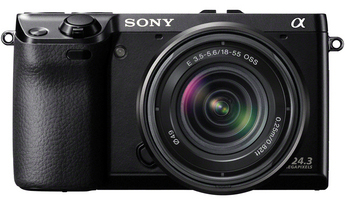
Sony Alpha NEX 7
-
Fujifilm Finepix X100
The retro look and amazing image quality of Fuji X100 makes it the part of this list even after one year of release. This large sensor compact camera features 12 MP APS-CMOS powered by new EXR processor with its ISO range extending upto 12800. These specs help in boosting the low light performance of the camera. In the words of Ken Rockwell, “The X100 has an uncanny ability to make great-looking images under any light”. Unlike other cameras in this list, Fuji X100comes packed with 23mm F2 single focal lens (equivalent to 35mm/135 Format) – no provision for interchangeable lens. Fujifilm is however in news for soon launching mirrorless interchangeable lens camera (likely to be revealed in CES 2012). You will need to pay $1199.95 approx. for this smallest and lightest real camera ever made. Get it here.
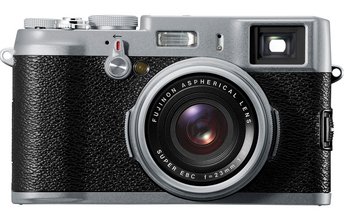
Fujifilm Finepix X100
-
Panasonic Lumix DMC G3
Last but not the least how can we forget Panasonic, the brand that land-marked the mirrorless DSLR to consumers in 2008 with the DMC-G1. In the league of providing the world’s smallest and lightest camera body with stylish design, Panasonic launched Lumix DMC G3 early this year. With certain improvements and refinements over G1 and G2, this Micro Four Thirds system is all set to impress the customers with its 16.7 MP CMOS sensor, GF-2 style touch screen interface, pinpoint AF mode, new live MOS for advanced noise reduction and 3D shooting capability all that for a cost of $699.99 approx. Get it here.
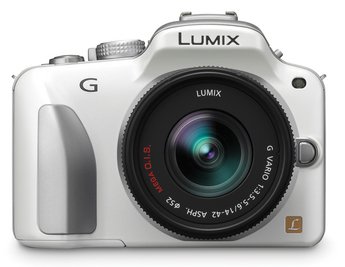
Panasonic Lumix Dmc G3
Take your pick and don’t forget to share your pics with us.


I recently had a chance to talk to someone who owns a new Sony mirrorless camera who was using it to take pictures in a tradeshow booth.
I asked him what he thought about this new kind of camera and his response surprised me. Not because of what he said but rather how similar it was to what I was thinking even though I had up until that point never touched one before.
Before I began pursuing photography as a serious venture, I owned a Canon A620 Powershot. It was a great little camera for casual picture taking but after my first son was born I began hitting the limitations all point and shoots come with.
That’s when I made the decision to buy my first DSLR. I’m glad I did because the Nikon D90 I bought is what really amped up my interest in photography.
Had I bought a mirrorless camera instead (if they were available three years ago) I’m not sure my interest would have been as intense as it is now.
The owner of the Sony mirrorless camera told me he liked it a lot but would not give up his Canon DSLR. I asked him why and he told me that even though there were definit advantages (light weight, compact, dslr sized sensor, interchangable lenses) it was more like a cross between a point and shoot and a dslr.
He showed me how he had to cycle through the on screen menus to set up the camera where as with a dslr you had near instant access with their control knobs, buttons & wheels.
I asked about what it was like to focus and for the most part he said it was pretty good except for the fact he didn’t like using the screen to do it. Even though the screen is fairly high resolution it still isn’t as good as your eye through the viewfinder.
All in all he said it was a great camera to use for those times he wanted something that could take great pictures but didn’t want to pack around a full size dslr all day.
After trying out his camera I understood what he meant, and like I said, I was surprised how his assessment was close to what I thought it would be like.
Would I get one one now? I’m not sure because it wouldn’t fit my needs (at this point anyhow). But I think it’s a great choice for people who could use something that is a great cross between a point and shoot and a DSLR.
A viewfinder is the soul of the camera. Therefore, a built-in viewfinder is a must-have feature in a camera. Those mirror-less cameras are really evil. If I have to spend $200-300 for a add-on EVF, their prices are not competitive. Fujifilm understands this and makes non-evil cameras; even their cheap cameras such 2950 has built-in EVF. I bought recently x10 and very happy with it. It’s not perfect (small sensor), but is much better than those evil cameras such NEX, Oly EP, Pana, etc.